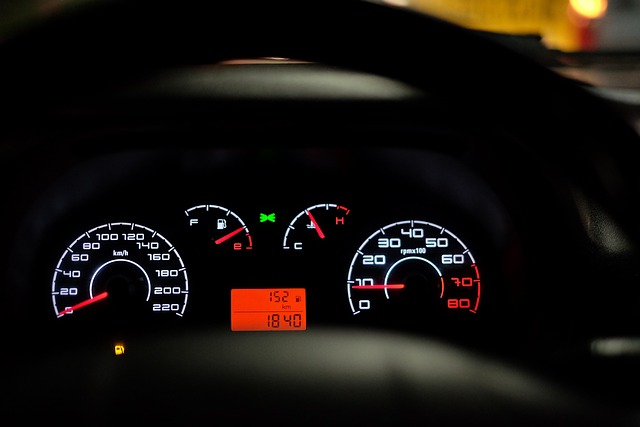Register Car California: Gather Docs at DMV VIN Verifier
Looking to register your car in California? This comprehensive guide walks you through every step, from understanding eligibility requirements to securing your license plate. We break down the process…….

Looking to register your car in California? This comprehensive guide walks you through every step, from understanding eligibility requirements to securing your license plate. We break down the process into simple sections, ensuring a smooth experience. Key aspects include gathering essential documents, visiting your local DMV, verifying the Vehicle Identification Number (VIN) with a trusted source, and paying registration fees. Discover expert tips using our recommended dmv vin verifier for a hassle-free car registration in California.
- Understand Eligibility Requirements for Car Registration in California
- Gather Necessary Documents for Car Registration
- Visit Your Local DMV and Complete Application Process
- Verify Vehicle Identification Number (VIN) with a Trusted Source
- Pay Registration Fees and Receive Your License Plate
Understand Eligibility Requirements for Car Registration in California

Before you begin the registration process, it’s crucial to understand the eligibility requirements set by California for car registration. To register a vehicle in California, your car must meet certain standards regarding age, condition, and safety features. The Department of Motor Vehicles (DMV) conducts thorough inspections to ensure all vehicles on California roads are safe and up to date. One essential step is verifying the Vehicle Identification Number (VIN), which can be done through a DMV VIN verifier or a mobile VIN verification service. This process ensures that your vehicle’s history, including any previous accidents or outstanding issues, is accurately checked, facilitating a seamless registration experience.
Additionally, certain types of vehicles may have specific requirements. For instance, classic cars or vehicles over a certain age might need to undergo a more in-depth inspection, while newer models typically require a standard DMV check. A mobile VIN inspector can provide on-site verification for added convenience, ensuring you meet all necessary criteria before proceeding with registration at your local California DMV office.
Gather Necessary Documents for Car Registration

Before you start the registration process, it’s crucial to gather all the essential documents required by the California Department of Motor Vehicles (DMV). This includes your vehicle’s Registration Application, a completed Title Transfer if applicable, and proof of insurance. The DMV also mandates a Vehicle Identification Number (VIN) verifier, often provided by your car dealer or through an online tool like a mobile VIN verification service, to ensure the vehicle’s authenticity.
Additionally, you’ll need to present valid identification documents such as a driver’s license or passport, along with any necessary fees and a smog certificate if required. For a hassle-free process, consider conducting a mobile VIN inspection prior to visiting the DMV, as this can save time and ensure all details about your vehicle are accurate, including its historical maintenance records and previous ownership information.
Visit Your Local DMV and Complete Application Process

To begin the process of registering your car in California, start by visiting your local Department of Motor Vehicles (DMV) office. This is where you’ll complete the necessary application and paperwork. The DMV will require key documents such as proof of ownership, a valid driver’s license, and potentially other identifying materials. One crucial step involves utilizing a DMV-approved Vehicle Identification Number (VIN) verifier to ensure the vehicle’s history is clean and free from any red flags. This process, often facilitated through a mobile VIN inspection or mobile VIN verification service, plays a vital role in confirming the car’s authenticity and safety before registration.
Once your VIN has been verified, you can proceed with filling out the registration application. The DMV will guide you through this step, collecting all required information and documents. This includes details about the vehicle itself, such as make, model, year, and color, along with personal information like your name, address, and contact details. After completing these essential steps, you’ll be one step closer to officially registering your car in California, ensuring compliance with state regulations and enabling you to legally operate your vehicle on public roads.
Verify Vehicle Identification Number (VIN) with a Trusted Source

Before proceeding with the registration process, it’s crucial to verify the Vehicle Identification Number (VIN) of your car using a trusted source. This step ensures that the VIN is accurate and unaltered, which is essential for legal and safety reasons. You can confirm the VIN by contacting the California Department of Motor Vehicles (DMV) or using a reputable mobile vin verification service.
A reliable method involves utilizing a mobile vin inspection tool, which allows you to cross-reference the provided VIN with official records. This additional layer of verification is beneficial as it helps identify any discrepancies and ensures your vehicle’s history is accurate. Thus, making sure that both the DMV and potential buyers have access to an unaltered and precise VIN is paramount for a smooth registration process.
Pay Registration Fees and Receive Your License Plate

After you’ve gathered all necessary documents and completed your vehicle’s smog test, it’s time to pay the registration fees. The California Department of Motor Vehicles (DMV) will process your application and issue a registration certificate, which confirms that your car is legally registered in the state. Along with this, you’ll receive your license plate, typically assigned by the DMV based on availability.
Ensure your vehicle’s VIN (Vehicle Identification Number) is accurate and verified using a trusted mobile VIN verifier or the official DMV VIN inspection tool. This step is crucial to prevent fraud and ensure compliance with California’s registration regulations. A valid and accurate VIN ensures that your license plate corresponds to the correct vehicle, protecting both you and other drivers from potential issues down the road.
Registering your car in California is a straightforward process that involves understanding eligibility requirements, gathering essential documents, visiting the local DMV, verifying the Vehicle Identification Number (VIN) using a trusted source, and paying registration fees. By following these steps and ensuring all necessary paperwork is in order, you’ll be well on your way to legally operating your vehicle in the Golden State. Remember to keep your registration up-to-date and always use a reputable DMV VIN verifier for accurate and secure checks.







